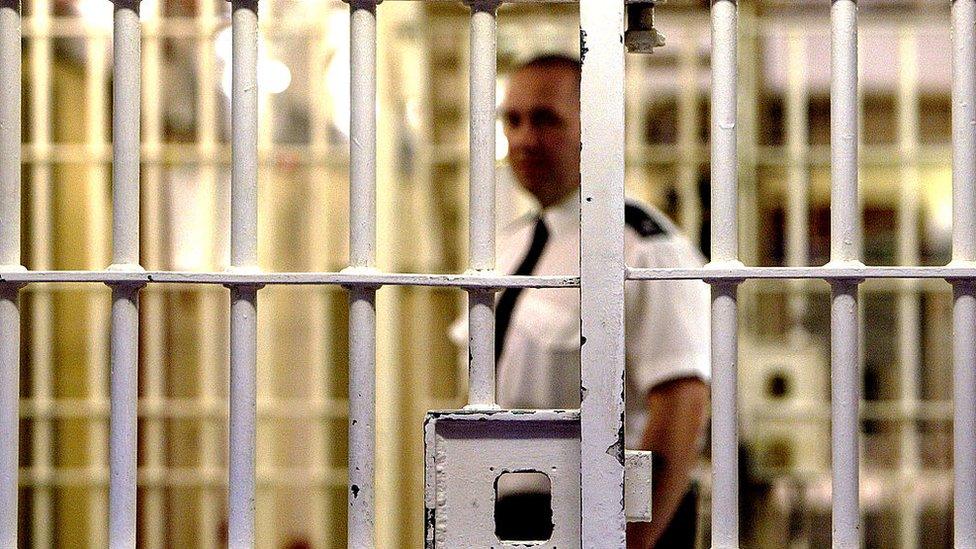How dangerous are prisons in England and Wales?
- Published

The government has made £100m available to improve security and cut crime in prisons in England and Wales.
So, what are the problems facing jails?
What makes a successful prison?
There are four basic measures for a "healthy" jail, set by Her Majesty's Inspectorate of Prisons:
safety
respect
purposeful activity and rehabilitation
release planning
What is the reality?
"Far too many of our jails have been plagued by drugs, violence, appalling living conditions and a lack of access to meaningful rehabilitative activity," chief inspector Peter Clarke said in his annual report.

Are prisons safe?
Self-inflicted deaths are more than six times more likely among prisoners, external than the general population.

Rates of self-harm among inmates are at their highest recorded level.
Prisoner-on-prisoner assaults are also at a record high, with almost 35,000 in the 12 months to March 2019.

And assaults on staff have tripled in recent years, with the rise of serious assaults a particular concern.
Is it about money and staffing?
The prison service saw budget cuts of 20% between 2010-11 and 2014-15.
The number of front-line prison officers also fell by 26% between 2010 and 2015.
What happened then?
In 2016, with prison violence and drugs use increasing, then Justice Secretary Liz Truss began a recruitment drive.
And £100m was pledged to find 2,500 new recruits by the end of 2018
There are now 22,300 front-line officers - 10% fewer than in 2010.
But recruitment on that scale has led to an increasingly inexperienced workforce.
And about a third of all staff now have less than two years' experience.

What about drugs?
Testing machines that can spot new psychoactive drugs, such as Spice - even as manufacturers tweak their chemical composition to evade detection - have been introduced.
In one jail, a towelling robe and a copy of a Harry Potter book were two of the more unusual items found to be laced with drugs.

But it is the installation of airport-style X-ray body scanners in 25 jails - mostly local prisons with a higher turnover of inmates - that prison staff regard as a "game-changer".
They detect not only drugs but also the miniature mobile phones used by dealers.

What about overcrowding?
Recent commitments to build more jails and expand the capacity of the prison estate may not solve the problem of overcrowding.
The male prison population in England and Wales passed 80,000 for the first time in 2006 and rose to 85,000 less than four years later.
It is now just under 83,000 in England and Wales' 117 prisons.

However, with prison sentences getting longer and a greater political appetite for the most serious offenders to serve ever longer jail terms, the prison population could rise by more than 3,000 by 2023.
This will put pressure on prisons trying to fulfil their mission to rehabilitate inmates and offer some kind of training or purposeful activity.
In some jails, one in five inmates told inspectors they were locked in their cells for more than 22 hours a day.
And, without access to training, fewer than one in five ex-prisoners are in paid regular employment a year after being released.

In Scotland, 7,600 people are in prison and 1,475 in Northern Ireland.
What can the inspectors do about unsafe jails?
Since November 2017 they have had the power to call the Ministry of Justice to account by issuing an "urgent notification".
The secretary of state must respond to the notice, publicly, within 28 days and develop an action plan to make improvements.
Urgent notifications have already been issued for six jails:
Nottingham
Exeter
Birmingham
Bedford
Bristol
Feltham A young offender institution